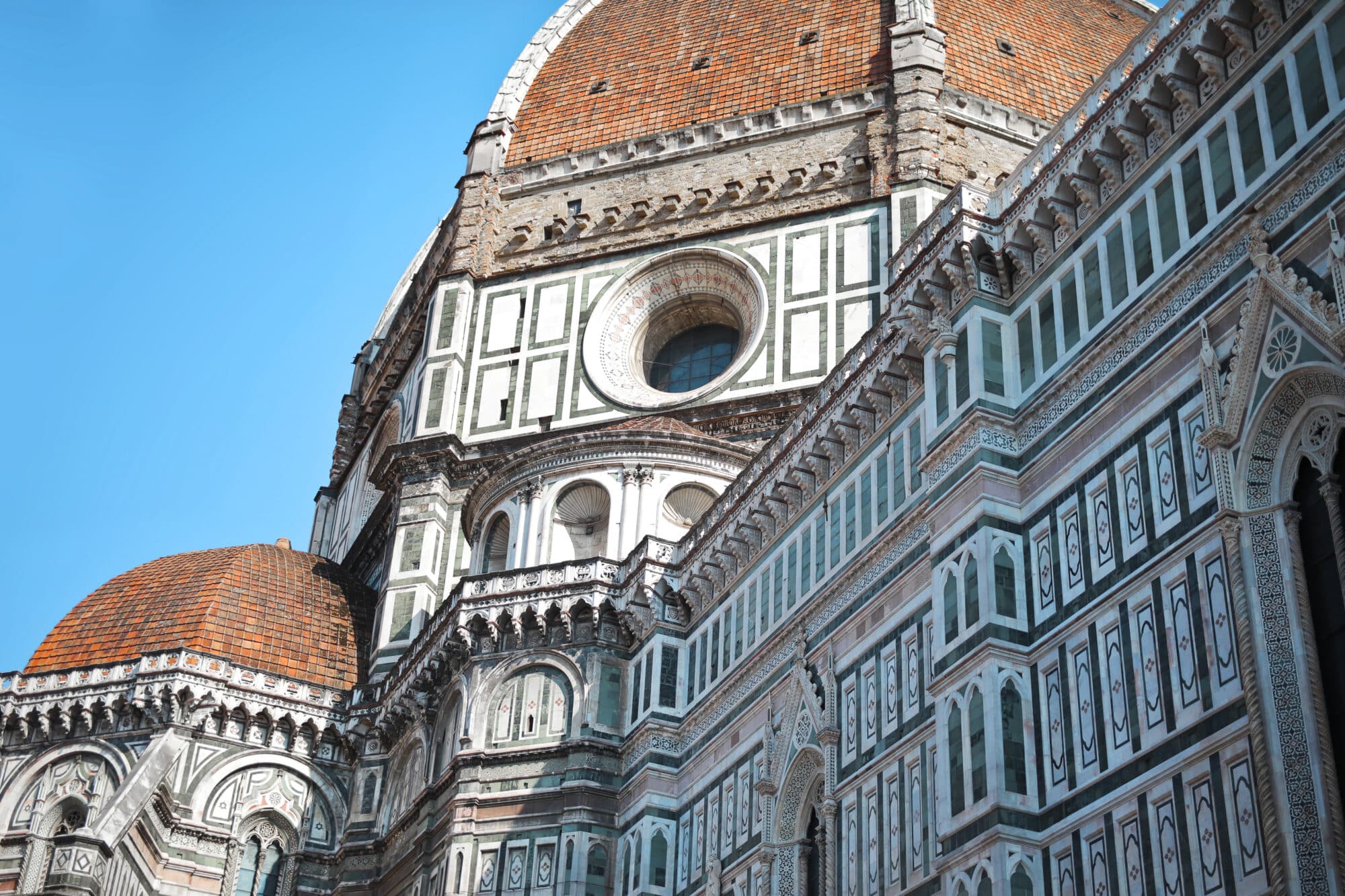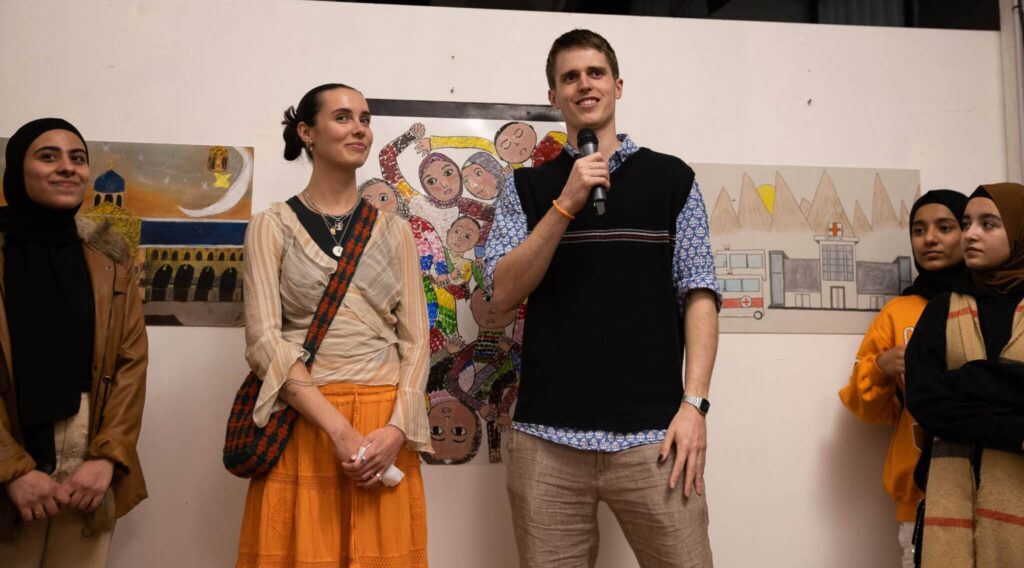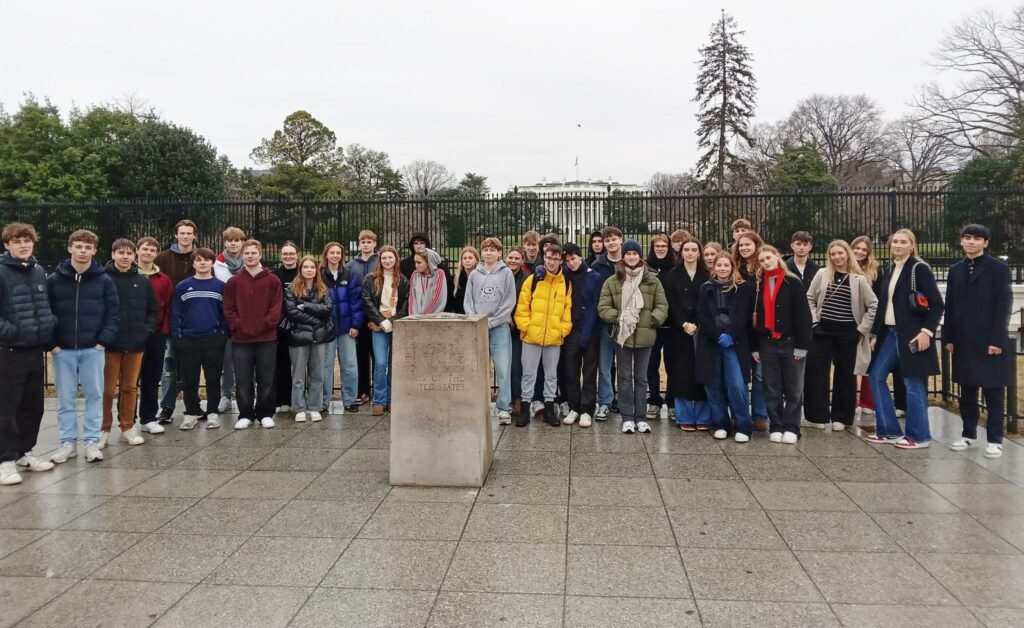History of Art Trip 2023 as described by the History of Art Pupils
The Italian Renaissance was a period of cultural flowering during the 1400s and 1500s when artists, architects, writers, philosophers and academics across a range of disciplines strove to revive ancient Greek and Roman culture. During this period, some of the most remarkable and famous artworks in European history were created by artists whose names will be familiar to you: Michelangelo, Donatello, Leonardo, Raphael, and those are not just the Teenage Mutant Ninja Turtles. We were lucky enough to spend four days in Venice and Florence where we immersed ourselves in the history of these two cities and saw first-hand many of the artworks and buildings we have been studying.
Christian (G)
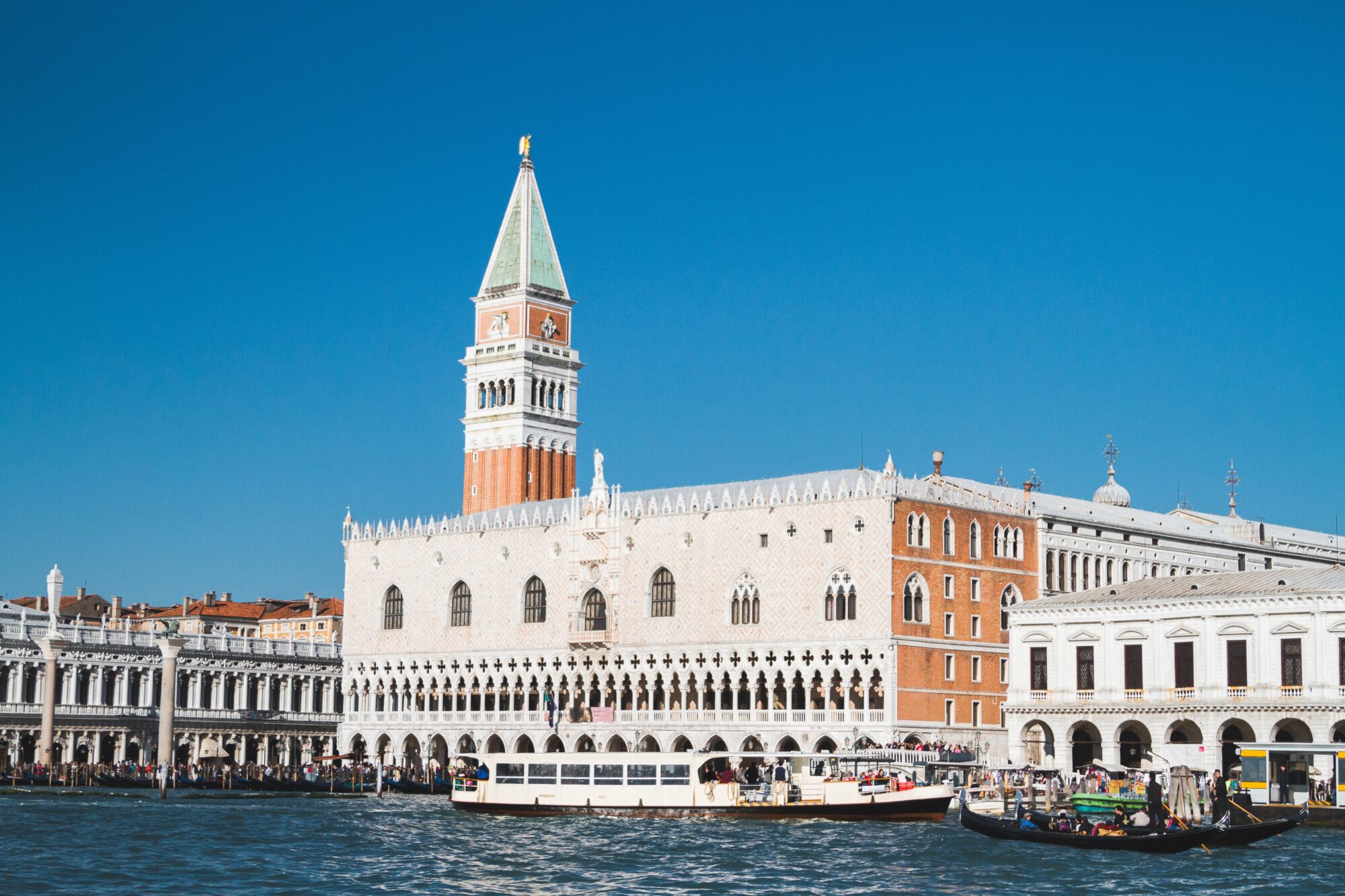
VENICE AND SAN MARCO
On the first evening, arriving in Venice after sunset, there was no other way to get to the hotel but by speedboat. Aside from being an unusual and exciting way to arrive in a city, it also meant that we could immediately appreciate what was unique about it – it’s built in a lagoon! If you haven’t been to Venice before, you might not realise that the city appears to rise out of the water like a miracle and that’s exactly the idea that the Venetians tried to promote throughout the period we are studying: its unique and miraculous presence. After a pizza supper at the hotel, we went for a late-night walk around the city. It was amazing to see Venice by moonlight and Mr Keeley even regaled us with a bit of poetry! The next morning we went to see St Mark’s Basilica and the Doge’s Palace to understand more about the history of the city. If you look at the outside of St Mark’s, some of you might immediately be thinking that it looks quite Eastern, particularly with its ‘ogee’ arches and multiple domes. This is because of Venice’s historic relationship with the East – from the 8th century Venice was allied to the Byzantine Empire, the centre of which was Constantinople, present-day Istanbul in Turkey. This political alliance, as well as the unique watery location of the city, explains the entire original aesthetic of Venice. Seeing the entire Basilica coated in mosaics, literally hundreds of thousands of tiny golden tesserae/stones inserted by hand by Eastern artisans, is something I shall always remember.
Alastair (G)
BELLINI SAN ZACCARIA ALTARPIECE
My favourite thing in Venice was Bellini’s Altarpiece in the church of San Zaccaria. Bellini was renowned for his impeccable use of colour and portrayal of soft natural light. This is evident in this work, light floods from the left-handside, corresponding with the entrance of the church, as it is inits original location. The Virgin and Christ face towards the light, highlighting their divinity. In the quiet atmosphere of the 15th-century Roman Catholic church, the ‘Sacra Conversazione’ (meaning holy conversation) was even more captivating. The figures, who are all saints, do not interact with each other, but through composition engage in a ‘holy conversation’ united in a single literal and psychological space. The sophistication of Bellini’s ‘trompe l’oeil’ techniques,allowed us to feel fully immersed in the ‘Sacra conversazione’, and highlighted his gift for achieving naturalism. We could appreciate the illusionism of the painted frame, which had immense perspectival accuracy, making it difficult to distinguish boundaries between real and painted architecture. The floor tiles and their orthogonal lines enhance the one-point linear perspective implied. They lead to the focal point of the painting, the vanishing point being Mary and Jesus. The angel beneath Mary and Christ is the only figure engaging with the viewer, stimulating our sense of sight and sound as he plays a ‘lira da braccio’, further immersing the viewer into the scene.
Lily (I)
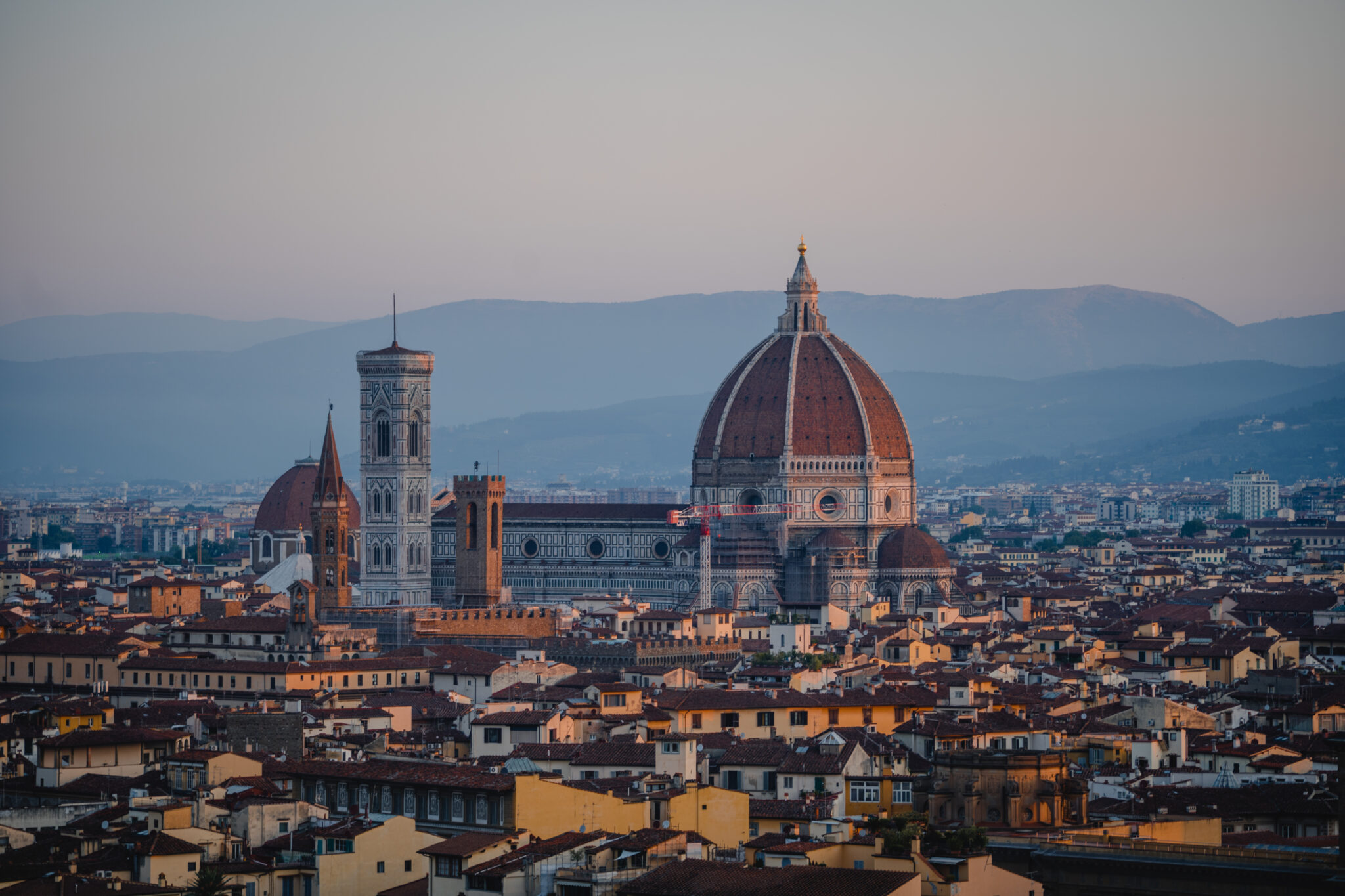
DUOMO DI FIRENZE
Sad to be leaving Venice, but equally excited to reach Florence, we embarked on the long drive on which Mr Goad indulged in an even longer chocolate bar. We merrily tore through some epic views and a small traffic sign and were greeted in Florence by the rain…. rain being quite possibly the biggest understatement one could make when describing the weather. Something along the lines of torrential downpour, or flood, would arguably seem more appropriate. We awkwardly huddled under a tree for about 15 minutes before we decided to hastily make our way to the hotel. After a speedy turnaround, umbrellas in hand, we walked to the Duomo where we stood and marvelled before unwillingly undertaking the workout of our lives… we walked up 463 stairs, 463 steep narrow stairs, however, luckily were led by Mr Goad, who motivated us like he was from a Chloe Ting workout video. Brunelleschi, a pretty clever guy, constructed a double-layered dome, which was self-supporting, allowing him to build a structure that could span such a huge crossing. This meant we could walk around the inside layer of the dome and admire Vasari’s fresco up close, a depiction of the Last Judgement, a heavenly realm in which the divine basked, and some quite graphic naked devils burned in hell. Finally, we made it to the very top which, I’m pleased to say, was completely worth the glutes burn. Florence spread out before our eyes, lit by streetlights which from such a distance seemed like fairy lights; we watched as busy Florence life bustled below…
Leyla (J)
GHIBERTI GATES OF PARADISE
On our first day in Florence, we took a walk around the centre of the city and were excited to spot the ‘Gates of Paradise’ by Lorenzo Ghiberti on the Florence Baptistry, immediately recognisable from our pre-trip studies. The excitement quickly dissipated when we understood that they were replicas. We were not however to be left disappointed as when we visited the Duomo museum. We saw the genuine Gates of Paradise and were astounded by their grandeur that truly exceeded our expectations. The piece was commissioned for the Florence Baptistry in the 15th century by the Calimala Guild, a group of wealthy cloth merchants, who wanted to celebrate Florence and show their immense civic pride and wealth. Each panel on the door shows a scene from the Old Testament. The complexity of the subject matter, extravagant materials and impeccable detail of each panel are what make these doors so memorable, and we all felt that seeing them was truly remarkable.
Mads (I)
